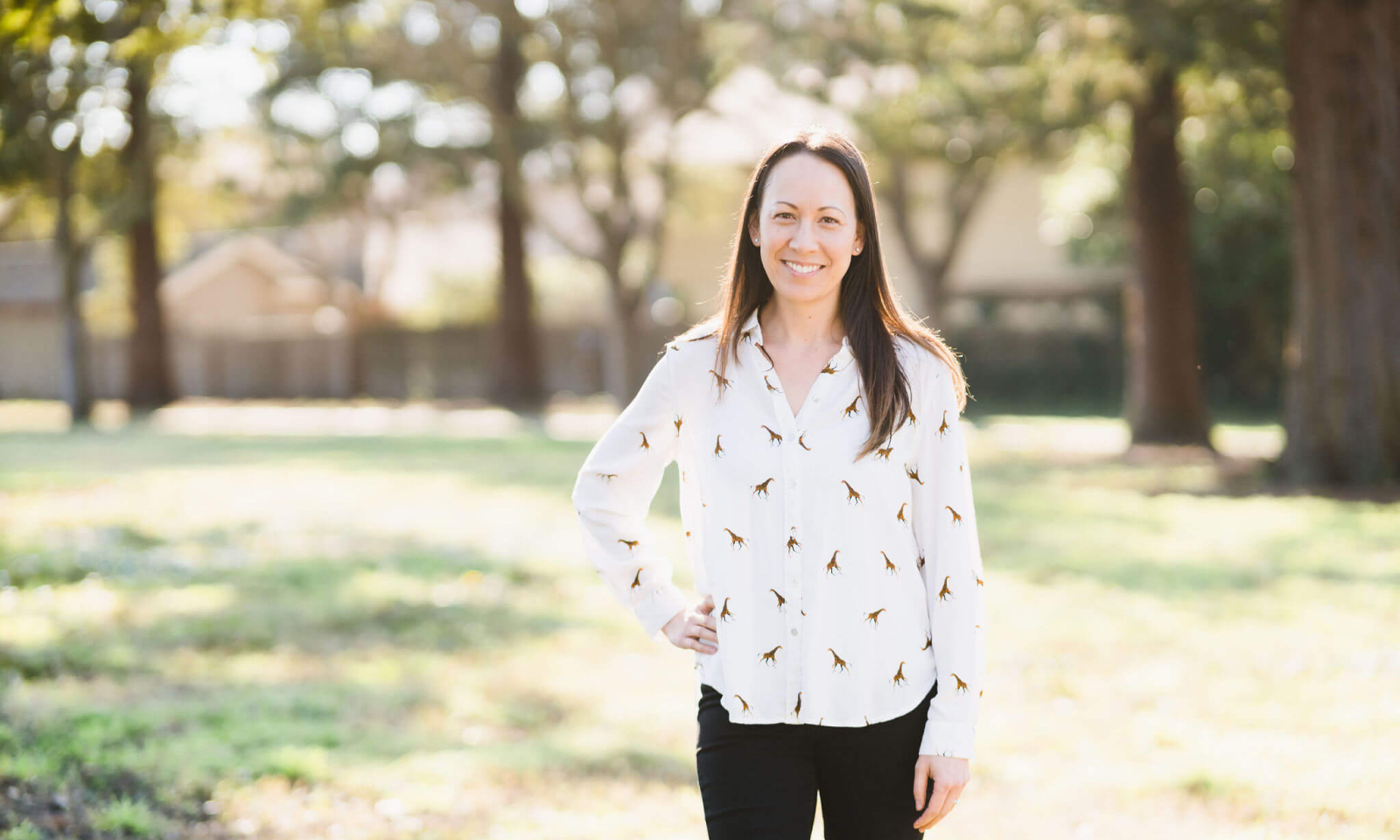Feb 18, 2021 · 5 min read
One Teacher on Addressing Trauma in the Classroom in the Pandemic Era

Anyone who knows 6th grade teacher Jennifer Sinclair knows she loves giraffes. She even uses a stuffed giraffe in the weekly “family meeting” with her students. The students gather in a circle, and only the person holding the giraffe is allowed to speak. Incorporating the giraffe became a way to show respect and allow students the opportunity to speak, and more importantly, listen.
So last spring, when COVID-19 forced schools to go remote, Jennifer found herself on Zoom trying to lead a virtual circle for her class. She even brought her stuffed giraffe home from her classroom.
“I showed it on the screen and pretended I was passing it,” she recalls. But it didn’t go as smoothly as she had hoped. It was difficult to pretend to all be standing in a circle and talking to each other. And it was especially hard to keep the students’ attention.
So, Jennifer got creative. She added in ice breakers like asking silly “would you rather” questions and had students do a scavenger hunt and bring back a piece of fruit or a pair of glasses that were in their homes.
“I was able to hold the meetings, but had to switch up how I did it virtually to keep them engaged,” she says.

Building relationships with her students was always a priority for Jennifer, but even more so after her training with the University of California San Francisco’s Healthy Environments and Response to Trauma in Schools (HEARTS) program.
“The HEARTS program is amazing and the work they do to help support teachers, which ultimately supports our students, has been a game changer for me,” Jennifer says. “I feel like I’ve arrived.”
HEARTS partners with schools to improve outcomes for students using a trauma-informed approach. This includes leading training and consultation for teachers on the effects of trauma on a developing brain, how trauma can impact students’ behaviors in class, and how chronic stress can impact students and adults. The program is guided by the principle that the wellness of school staff is vital to creating healthy learning and teaching environments.
Also central to the HEARTS approach is partnering with schools to reckon with structural racism and personally mediated implicit and explicit bias, recognizing that these can be stress- and trauma-inducing. The ultimate goal is to create learning environments that foster resilience and mental well-being for everyone in the school community.
For students to understand that we care about them in ways that are beyond their academics is so powerful. We really need to tackle that first, before we can get into academics because a student will be much more likely to respond to your teaching when they have built a relationship with you.
For example, a student who lost a family member to COVID-19 or is experiencing food or shelter insecurity from the economic fallout of the pandemic may perpetually be in “fight-or-flight” mode. It can be more difficult for that student to learn effectively. Because HEARTS-trained schools understand how trauma can impact learning, they are prepared to respond effectively to students in the moment as well as build more supportive systems in the school community.
HEARTS recently received a grant from the Chan Zuckerberg Initiative to expand its approach nationwide, and as more students are exposed to pandemic-based trauma, the more pressing HEARTS trainings become.
“We used to say, most of you have been impacted by trauma. Now I’m saying everybody has been impacted by trauma,” says clinical psychologist Martha Merchant, or Doc Martha, as she’s affectionately called by many teachers. Doc Martha has been with HEARTS since 2012 and leads many of the organization’s in-school training and consultation.
Trauma is often thought of as experiencing a death, divorce, or abuse. But Doc Martha says everyday life in the COVID-19 pandemic has created opportunities for trauma.
Speaking about the plight of essential workers, Doc Martha says, “If your mother or father, or both, are going out into a dangerous place every day and you’re worried about them getting COVID or not coming home, your parents going to work might be experienced as a trauma.”

For Jennifer that’s what makes reaching students during the pandemic so important.
“For students to understand that we care about them in ways that are beyond their academics is so powerful. We really need to tackle that first, before we can get into academics because a student will be much more likely to respond to your teaching when they have built a relationship with you,” Jennifer says. “They respond so much better and therefore make greater gains in their academics and achievement.”
For now, Jennifer is in a remote part-time intervention teaching role while she cares for her new daughter. But she is looking forward to the days when school is safely back in person and she can get back to family meetings with her new 6th graders – each standing to form a circle, taking a turn passing the giraffe, and sharing their stories.





